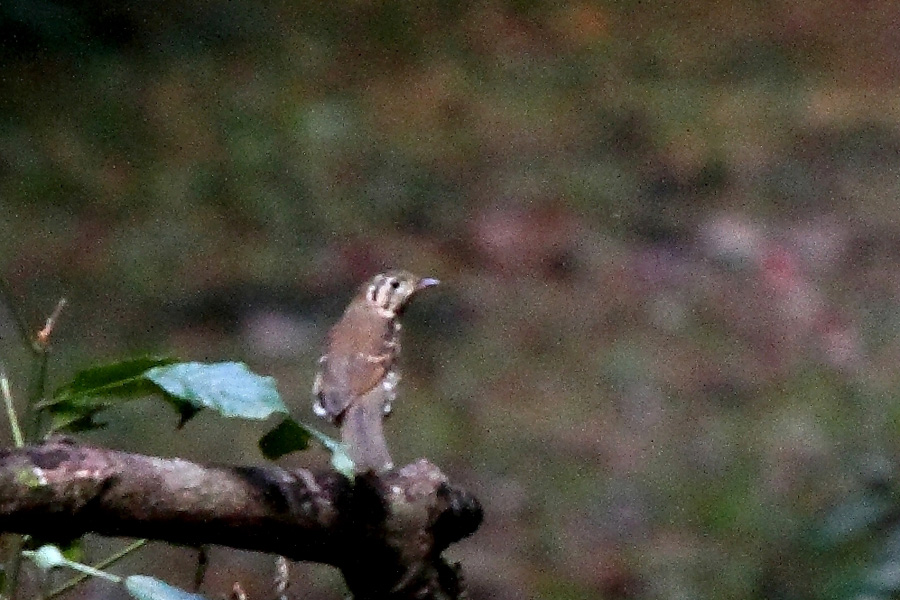
Extract from the article in Indian BIRDS 9 (5&6): 155–157
During a visit to Namdapha National Park, Arunachal Pradesh, India, on 17 November 2013, a bird was seen and photographed while walking along a trail at c. 500 m in tropical evergreen forest between Haldibari and Hornbill camp. The photographs show that the bird was a thrush Turdus/Zoothera, with a greyish-brown crown, back and tail. The face is fairly pale with two dark vertical stripes, the first extending down from the side of the crown through the dark eye to the lower edge of the ear-coverts, and the second along the rear edge of the ear-coverts. The wing shows two distinct pale wing-bars: a short one on the median coverts and a longer one on the greater coverts, and also a suggestion on the tertials of dark outer webs and brighter, olive inner webs. There are numerous large, round dark spots visible on the breast, and others can be made out extending down to the belly. The legs appear pale and the bill grey. Identification as a Chinese Thrush (Turdus mupinensis) was based mainly on the distinctive face pattern and the heavily spotted underparts, which eliminate most other similar thrushes.
This is the first record of Chinese Thrush in the Indian subcontinent.
Spanning nearly 2000 sq kms, Namdapha National Park is located in Changlang district of the Northeastern state of Arunachal Pradesh, near the border with Myanmar. It is the third largest national park in India in terms of area. It is located in the Eastern Himalayan sub-region and is recognised as one of the richest areas of biodiversity in India. The park is located between the Dapha bum range of the Mishmi Hills and the Patkai range with a wide altitudinal range between 200m ASL and 4571m ASL. The area falls under both the Palearctic and Indo Malayan biogeographic areas resulting in a diverse species assemblage. The habitat changes with increasing altitude from tropical moist forests to montane forests, temperate forests and at the higher elevations, to alpine meadows and perennial snow (courtesy: http://namdaphanationalpark.in).

 CI is a non-profit, non-commercial portal that aims to facilitate wildlife and nature conservation by providing reliable information and the tools needed to campaign effectively.
CI is a non-profit, non-commercial portal that aims to facilitate wildlife and nature conservation by providing reliable information and the tools needed to campaign effectively.
Chosen as 'Picture of the Week'
Spanning nearly 2000 sq kms, Namdapha National Park is located in Changlang district of Arunachal Pradesh, near the border with Myanmar. The area falls under both the Palearctic and Indo Malayan biogeographic areas resulting in a diverse species assemblage.